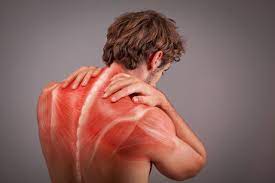Autoimmune diseases are the reactions of the immune system towards the healthy or normal cells of the body. This usually causes incurable diseases that produce lifelong disturbed health. Patients with any autoimmune disease, whether common or rare, suffer continuously and find themselves altering their lifestyle every now and then.

Autoimmune diseases
Our immunity is what keeps us healthy. The ability to differentiate between pathogenic cells and normal/healthy cells of the body produces the general effects of strong immunity, but the lack thereof results in disease.

When we encounter any discomfort that does not fall into the symptoms of common diseases, we step forward for an in-depth examination. The results are always the same; it creates an off-balance attitude for a span of time.
Autoimmune diseases are one of them. It is the inability of the immune system to differentiate between healthy and internal body cells and external pathogens.
Disability is caused by disabled autoimmune
While the immune system is made to protect us from pathogens resulting in ailments, the lack of it can easily cause diseases. These diseases are sometimes fatal, and if not, they can last a lifetime.
The disability caused by autoimmune diseases hinders our progress at any point in time. The news of the hour is that it has become very common to face autoimmune diseases.

Conditions that were known before and that many people around the world experience, no matter how old they are, are:
- Rheumatoid arthritis
- Diabetes Type 1
- Multiple Sclerosis
- Psoriasis
- Lupus
- Myositis
The common symptoms of autoimmune diseases include fatigue, joint pain, swollen glands, skin problems, recurring fevers, and abdominal issues.
Myositis
Myositis is a very rare autoimmune disease affecting the muscles of the body.
In general terms, myositis is an inflammation of the muscles. This inflammation can occur in any muscle of the body. For any autoimmune disease, age and gender are rarely a bar.

The symptoms may vary with different people, yet the common ones include:
- Weak muscles result in difficulty in performing day-to-day activities.
- Painful muscles
- Feeling tender when muscles are touched
- Weight loss
- Night sweating
- Consistent pain and feelings of tiredness
The tests pursued by the clinicians to diagnose myositis are blood tests to check the levels of enzymes and antibodies, MRI scans, biopsy, and EMG (Electromyography) to map the electric signals from muscles.
Myositis, with its symptoms, is at times confused with Lupus. The differences can be found in specific locations of those similar symptoms.
Types of Myositis

Three of the most profound types of myositis found in medical examinations are:
- Polymyositis: thigh and shoulder muscles are affected in this myositis and are observed in women of the age range of 30-60.
- Dermatomyositis: more commonly observed in women and sometimes in children, the most prominent symptom is a rash, leading to pain and other common symptoms of myositis.
- Inclusion Body Myositis (IBM): commonly found in men above 50 years of age, the painful muscles are found in the thighs, forearms, and below the knees.
Preventive measures post-diagnosis
Nobody has a grip over what health calamity might befall them. But what follows the calamity is the main concern. The first step towards good health should be a prompt reaction to any negative symptom and a follow-up when the symptoms subside.
As long as the permanent diagnosis of a disease does disrupt the flow of life and forces the patient and their caretakers to re-route it, it can still be managed with the inputs required by the patient.

The measures put into action after a diagnosis are the main criteria for a healthy and survivable future. For myositis, these measures include:
- Exercises: mobility has always been a boon for good health and should be practised even when one is healthy. After the diagnosis, a new exercise plan should be put into motion to help the pain subside and enhance the process of restoration of muscles back to their original state.
- Physiotherapy: Another major technique to achieve movement in the day for myositis patients is physiotherapy. As it is focused and guided by professionals under medical observation, it applies different methods than general exercises. A doctor might prescribe visits to physiotherapists before planning a daily exercise.
As the preventive measure and follow-up of myositis involve mobility, it is still advised to avoid it during a flare-up period as it might aggravate the symptoms.
Knowledge is power
An informed individual is a boon for society and can provide an essential and efficient amount of help needed by the people around them. Thus, it is necessary to provide an accurate amount of awareness related to any issue.

Myositis might be a rare autoimmune disease, but the knowledge pertaining to it proves beneficial for the patient and their caretakers. We should make an effort to learn and make room for those who, unfortunately, are affected by such diseases.
read more – Elon Musk dismisses Parag Agrawal, Vijaya Gadde after acquiring Twitter













